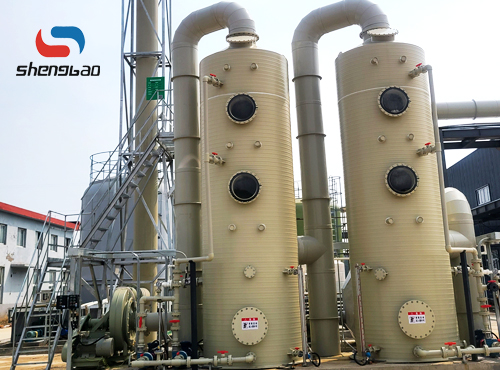Cases
News
- The Essential Role and Advantages of Industrial Cooling Towers: Spotlight on Shengbao Cooling Tower
- What is the difference between an air cooler and a water cooler
- What are the factors affecting condensation heat transfer
- What are the advantages of evaporative air coolers?
- Closed cooling tower winter operation need to pay attention to what?
Contact Us
E-mail:shengbaoinfo@gmail.com
Mobile:+86 18054455947
Tel:+86 15253666158
Address:West of Jinshan Street, Xin'an Street, Anqiu City, Weifang City, Shandong Province
PPH Cases
PPH absorber project installation

Shengbao PPH Absorber Project Installation
The installation of a PPH absorber project is a complex and crucial process that requires meticulous planning and precise execution. Here are the key steps and considerations involved:
Planning and Design
Before the actual installation begins, a detailed plan and design are essential. This includes conducting a thorough site assessment to determine the best location for the absorber based on factors such as available space, accessibility for maintenance, and connection to the existing piping and equipment. Engineers also need to calculate the required size and capacity of the absorber to handle the expected gas flow and absorption requirements.
Material Selection
Choosing the right PPH (Polypropylene Homopolymer) material for the absorber is critical. PPH offers excellent chemical resistance, but the specific grade and thickness of the material should be selected based on the nature of the gases being absorbed and the operating conditions. For example, if the absorber will be exposed to highly corrosive gases, a higher-grade PPH with enhanced resistance properties might be necessary.
Fabrication and Pre-Assembly
The absorber is fabricated off-site, and components are pre-assembled as much as possible to minimize on-site installation time. Quality control checks are carried out during this stage to ensure that all welds, joints, and fittings are of the highest standard.
Installation on Site
The absorber is transported to the site and installed using appropriate lifting equipment and rigging techniques. Special attention is paid to aligning the absorber with the existing piping and supports to ensure proper connection and stability. Welding and sealing of joints are performed by qualified welders following strict welding procedures.
Piping and Instrumentation Connection
The absorber is connected to the inlet and outlet piping for the gas flow, as well as to any associated instrumentation such as pressure gauges, temperature sensors, and flow meters. The piping should be properly supported and insulated to prevent leaks and heat loss.
Testing and Commissioning
Once the installation is complete, the absorber undergoes rigorous testing to ensure its integrity and performance. This includes pressure testing to check for leaks, functional testing of valves and controls, and performance testing to verify that the absorber is meeting the specified absorption efficiency.
Safety Considerations
Throughout the installation process, safety is of paramount importance. Workers need to be trained in proper handling of PPH materials, use of safety equipment, and adherence to safety protocols. Hazardous gas detection systems should be in place, and emergency response plans should be established.
Documentation and Training
Comprehensive documentation of the installation process, including as-built drawings, test reports, and operating manuals, is prepared. Operators and maintenance personnel are provided with training on the safe and efficient operation and maintenance of the PPH absorber.
Example: In a chemical plant, the installation of a PPH absorber for removing harmful gases from the process stream was carried out successfully by following these steps. The careful planning and precise installation resulted in a reliable and efficient absorber that met all environmental and operational requirements.
In summary, the successful installation of a PPH absorber project requires a combination of technical expertise, quality materials, careful planning, and strict adherence to safety and quality standards.
- Pre:Lithium project PPH vertical storage tank installation
- Next:No More














